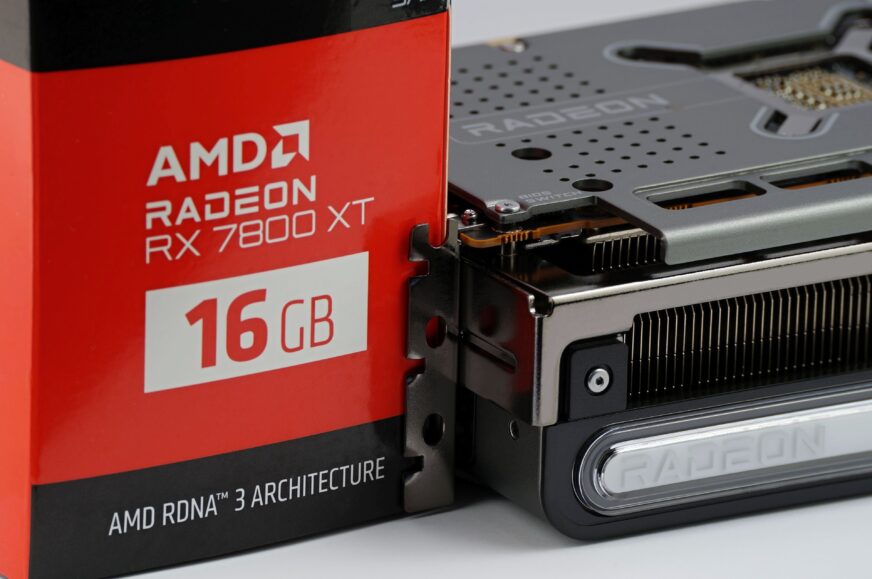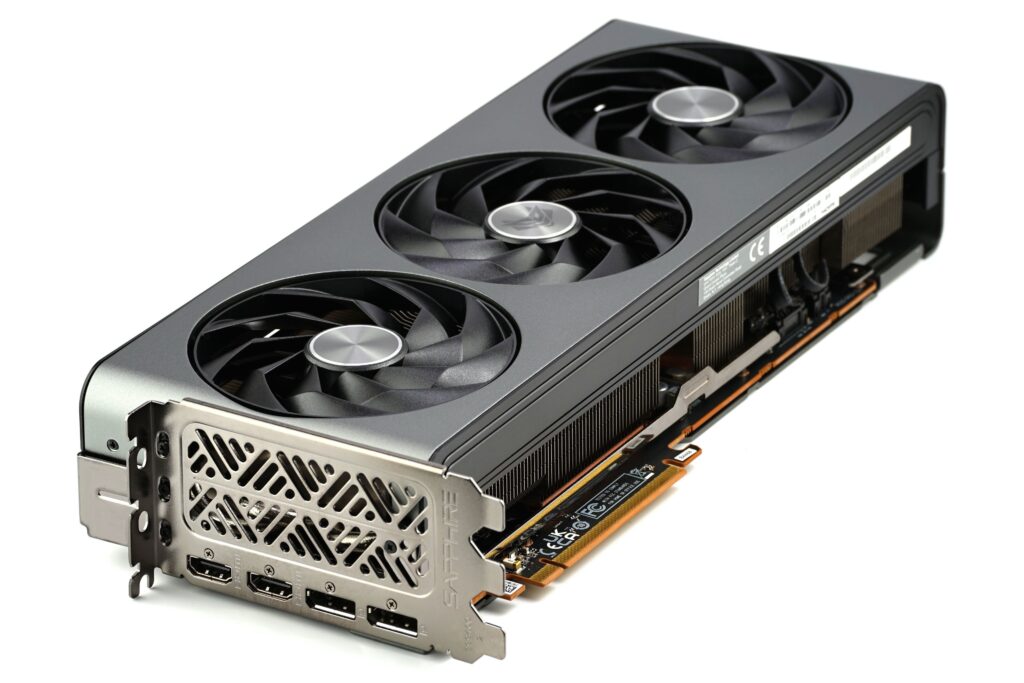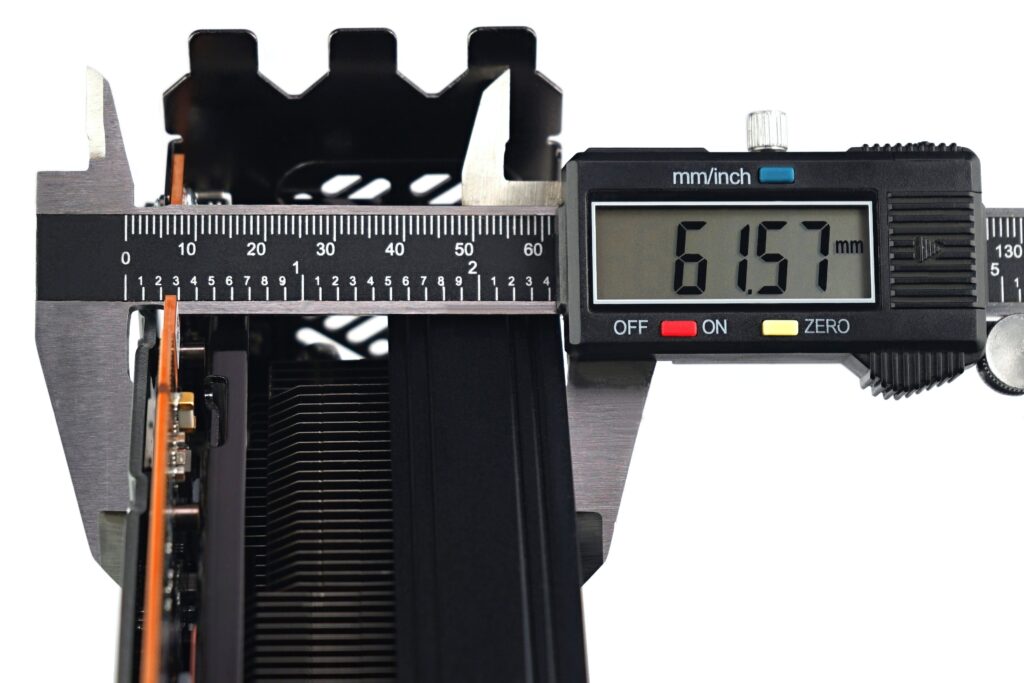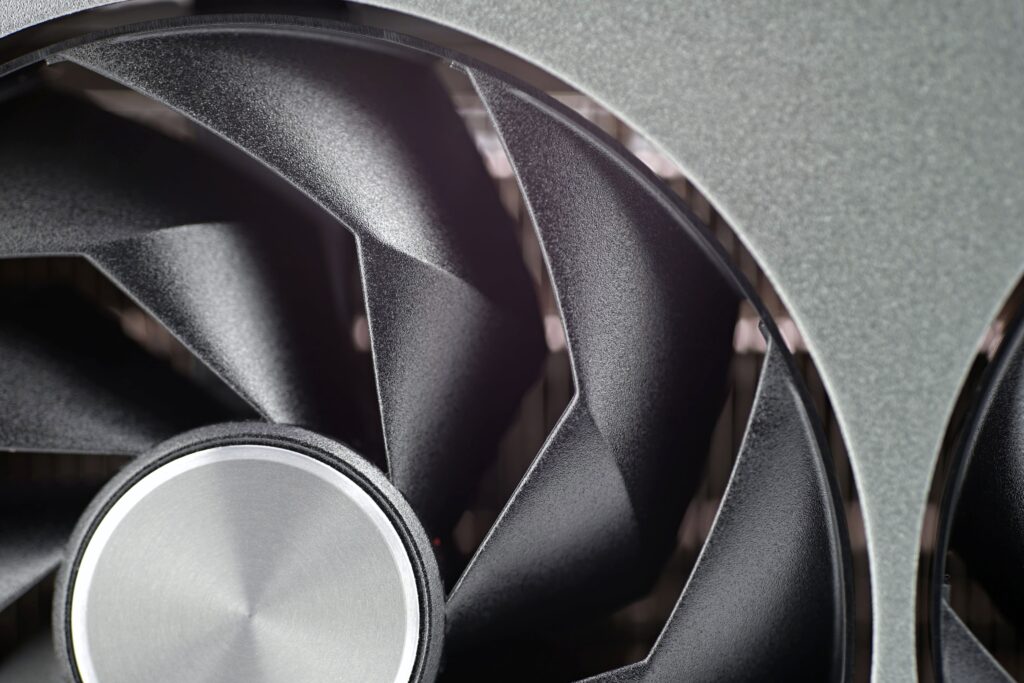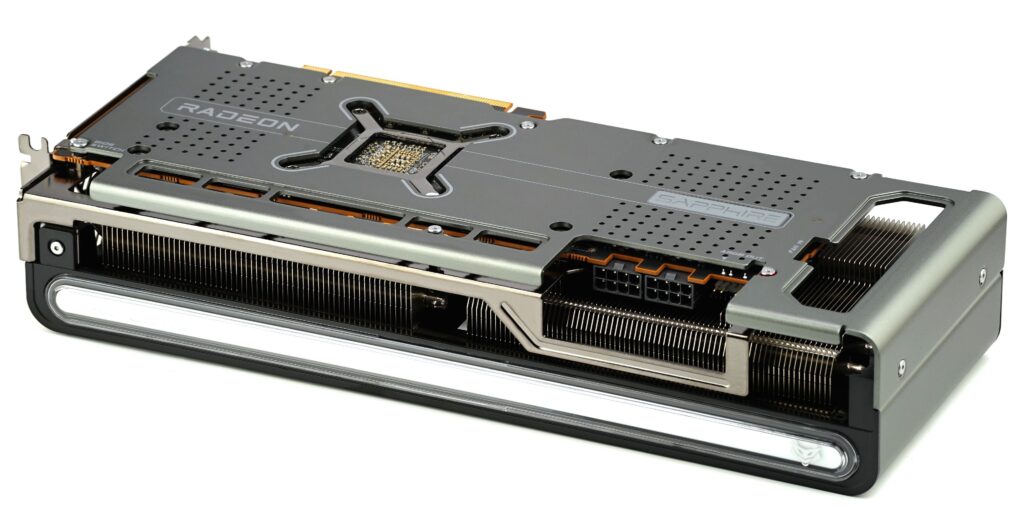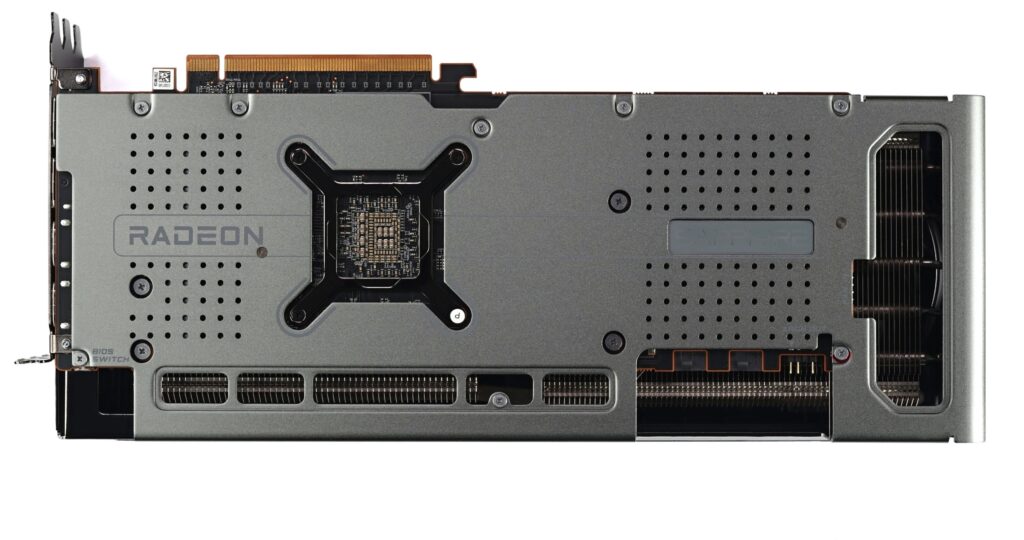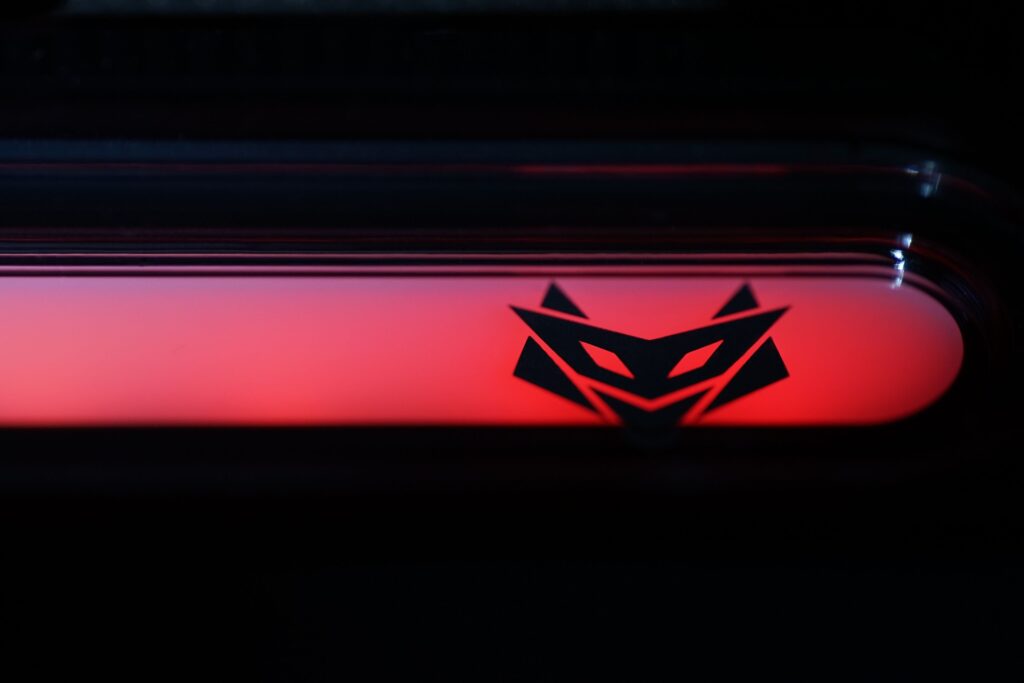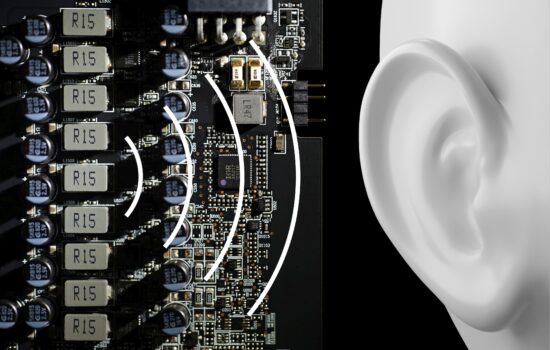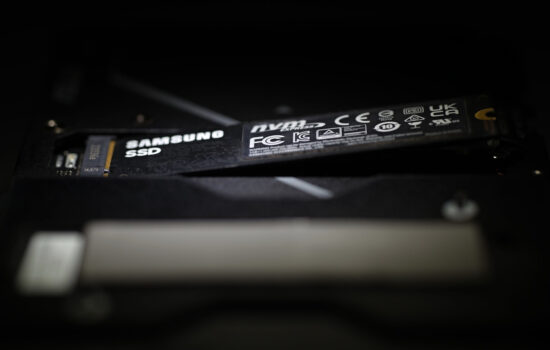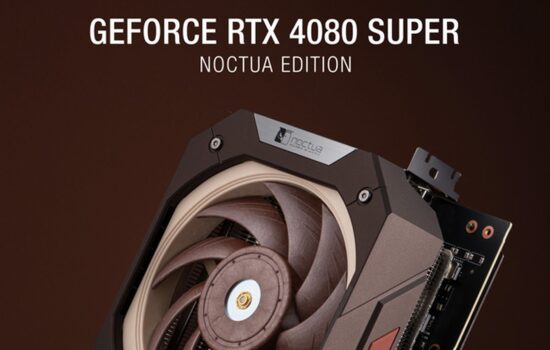Sapphire RX 7800 XT Nitro+ in detail
We start our mid-range Radeon 7000 tests with a more powerful model with a fully enabled Navi 32 GPU. The RX 7800 XT is mainly a competitor to the GeForce RTX 4070, which is a more expensive but also lower-power (and efficient) graphics card. However, Sapphire handled the relatively higher power draw exceedingly well, and if you have experience with “noisier Radeons”, that won’t be the case with the RX 7800 XT Nitro+ at all.
After the AMD Navi 31 (in the Radeon RX 7900 XT and the XTX) and AMD Navi 33 (Radeon RX 7600) GPUs, now AMD Navi 32 has gotten into practice. That’s through the Radeon RX 7800 XT and RX 7700 XT. The former, the RX 7800 XT, is equipped with everything that it could be, namely four functional MCDs (Memory Cache Die).
In total, the RX 7800 XT has 60 compute units and therefore provides 3840 shaders. Compared to the RX 7900 XT this is more than a third less, but compared to the RX 7600 it’s still almost double. The Radeon RX 7800 XTs are fitted with 16GB of GDDR6 memory and have a 256-bit memory bus width. The Sapphire Nitro+ variant tested is specific in that with 2565 MHz, it exceeds the GPU’s reference boost (2430 MHz) by 135 MHz. As usual, a complete overview of the parameters can be found in the detailed table in Chapter 2.
Sapphire RX 7800 XT Nitro+ in detail
This is the most feature-rich and expensive of the four Sapphire designs. In addition to the “Nitro+” variant, there is also (in order of price and equipment) the “Pure, the “two-fan” “Pulse“ and the basic card with a reference cooler.
The RX 7800 XT Nitro+ is a hefty piece of hardware, weighing in at over 1.6kg. We can note that this is a no-compromise solution from Sapphire, but it always comes with worse compatibility with the computer case or with expansion cards on the motherboard.
In length, this graphics card takes up to 320 mm in the case. With those, it’s still shorter than most alternative GeForces from the RTX 4070 Ti upwards, but it clearly outgrows (and those are the ones it competes with) many RTX 4070s already. And it does so in height (or thickness) as well. On that axis, it’s 61.57mm, with which the RX 7800 XT Nitro+ safely blocks three PCI Express slots underneath.
The fans used are 95 mm in diameter and the shape of their rotor is remarkable. The pronounced curve of the leading edges, the hoop connecting the blade tips (to reduce vibration) and the central kink. This stiffens the blades to some extent, but mainly ensures a more even distribution of the aerodynamic load, which should also increase cooling efficiency to some extent.
On the opposite side is naturally the backplate (metal), which is where Sapphire played around with cooling vents. Not only by cutting a window in the back where the heatsink overhangs the PCB, but also in areas behind the VRM where hot air can escape faster.
External power supply is provided by two 6+2-pins, next to which there is even, perhaps a bit unconventionally, an ARGB connector. The latter is used to connect lighted accessories that can be conveniently synchronized with the LEDs on the graphics card itself. And it is also worth mentioning the three-position switch between the two BIOSes is in the first position, which allows software configuration, or BIOS selection (Primary/Secondary) via the application TriXX. We test with the “Primary” BIOS.
Due to the higher weight (approx. 1608 g) and greater length, the accessories also include a PCI Express slot support bracket and, in addition to it, an extension cable with ARGB connectors, which, as mentioned above, can be connected to the PCB of the graphics card (next to the external power connectors).
Below is a gallery of details of the built-in lighting. Most noticeable is the light-emitting strip on the side that runs the entire length of the graphics card. From the top, on the backplate, the Sapphire text logo is then also symbolically lit.
Note: The article continues in the following chapters.
- Contents
- Sapphire RX 7800 XT Nitro+ in detail
- Table of parameters
- Methodology: performance tests
- Methodology: how we measure power draw
- Methodology: noise and sound measurement
- Methodology: temperature tests
- Test setup
- 3DMark
- Age of Empires II: DE
- Assassin’s Creed: Valhalla
- Battlefield V
- Battlefield V with DXR
- Borderlands 3
- Control
- Control with DXR
- Counter-Strike: GO
- Cyberpunk 2077
- Cyberpunk 2077 with DXR
- DOOM Eternal
- F1 2020
- FIFA 21
- Forza Horizon 4
- Mafia: DE
- Metro Exodus
- Metro Exodus with DXR
- Microsoft Flight Simulator
- Red Dead Redemption 2 (Vulkan)
- Red Dead Redemption 2 (Dx12)
- Shadow of the Tomb Raider
- Shadow of the Tomb Raider with DXR
- Total War Saga: Troy
- Wasteland 3
- Overall gaming performance and performance per euro
- CompuBench (OpenCL)
- SPECviewperf 2020 and SPECworkstation 3
- FLOPS, IOPS and memory speed tests
- 3D rendering 1/2 (LuxMark and Blender@Cycles)
- 3D rendering 2/2 (Blender@Radeon ProRender and Eevee)
- Photo editing (Adobe Photoshop, Lightroom and Affinity Photo)
- Broadcasting (OBS and Xsplit)
- Password cracking
- GPU clock speed
- GPU and VRAM temperatures
- Net graphics card power draw and performance per watt
- Analysis of 12 V branch power supply (higher load)
- Analysis of 12 V branch power supply (lower load)
- Analysis of 3.3 V branch power supply
- Noise level
- Frequency response of sound
- Conclusion





